Art World
Ojibwe Artist George Morrison, an Undersung Abstract Expressionist, Gets a Line of USPS Postage Stamps
The stamps feature five landscapes by the late artist.
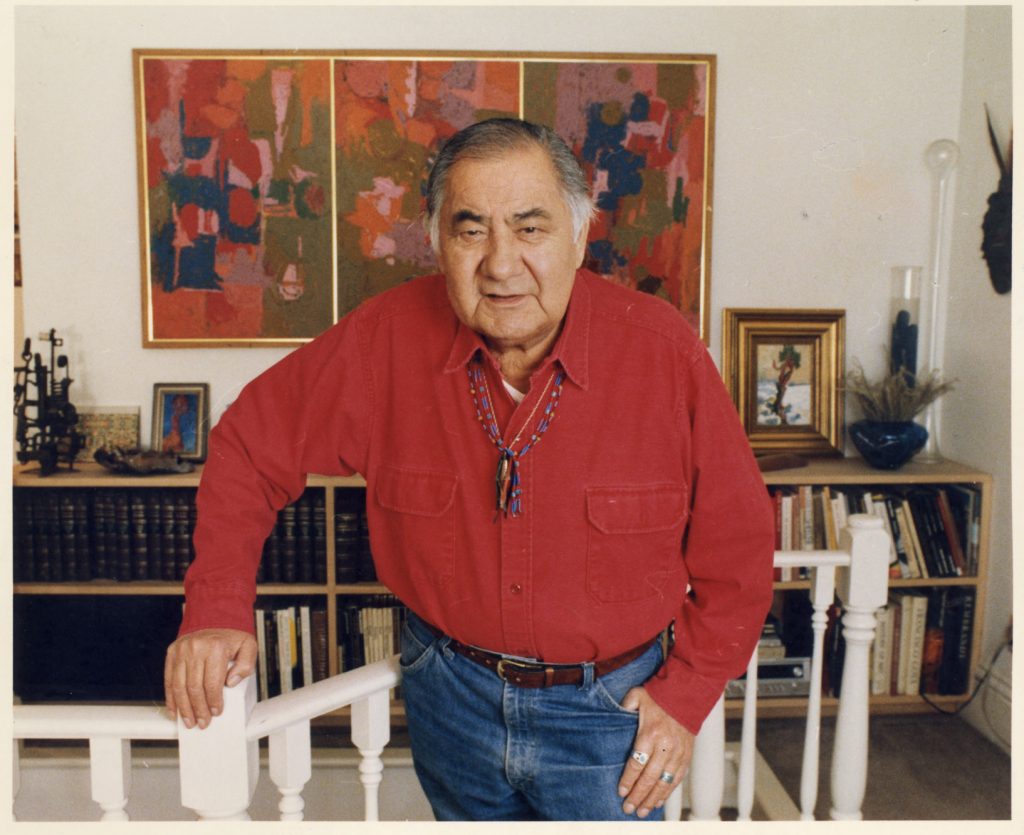
The stamps feature five landscapes by the late artist.

Caroline Goldstein

The artist George Morrison just got the ultimate stamp of approval courtesy of the United States Postal Service. Five vibrantly colored abstract landscapes the artist, who died in 2000, are now featured on a new pane of Forever Stamps.
The Ojibwe artist was raised in Chippewa City, Minnesota, and discovered a knack for art during a yearlong recovery from hip surgery as a child. Upon graduating from high school, he attended the Minneapolis College of Art and Design before moving to New York, where he immersed himself in the downtown art scene and took classes at the Art Students League.
Morrison joins the ranks of such American artists as Ellsworth Kelly, Ruth Asawa, Edward Hopper, and Jackson Pollock, who have all been honored with official U.S. postage stamps.
With his bold colors and geometric abstractions, Morrison found kinship with contemporaries including Willem de Kooning and Louise Nevelson, and he developed a style that blends Cubism, Abstract Expressionism, and Surrealism. After a stint in Paris as a Fulbright scholar, Morrison began to gain some critical renown, and had 12 solo shows in New York between 1948 and 1960—though he never found the same degree of success as his peers.
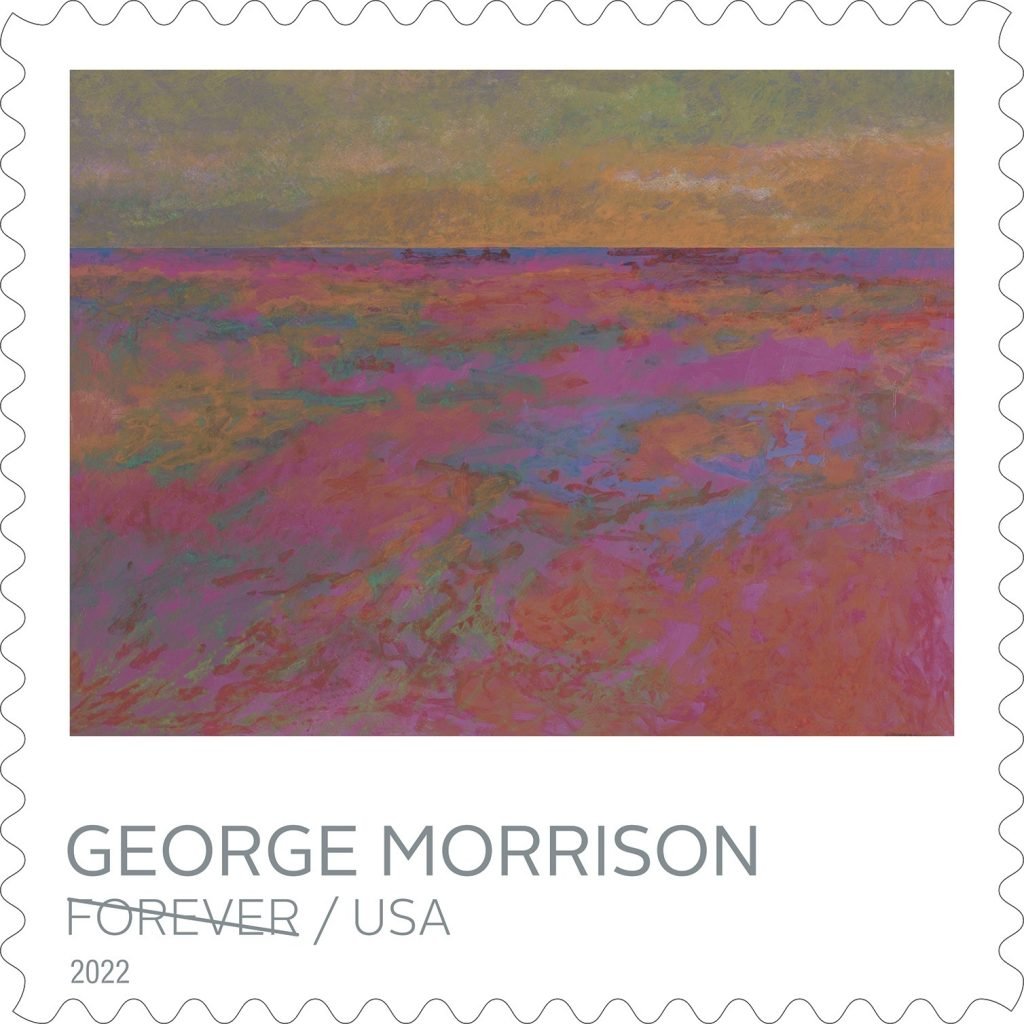
George Morrison’s Lake Superior Landscape (1981). Courtesy of the United States Postal Service.
Throughout his career, while battling numerous health issues, Morrison experimented with new techniques, ultimately alighting on a type of sculptural assemblage using driftwood from the shores in Provincetown, Massachusetts, which he described as “paintings in wood.”
The defining theme in Morrison’s work across painting and sculpture is the presence of a horizon line bisecting the picture plane, representing the delineation between ground and sky, as well as the spiritual and natural worlds. The deep jewel tones he utilized in many paintings are echoed in varying shades of wood collected from the waters’ edge, fitting together fields of color like puzzle pieces or broken sea glass. His work was heavily influenced by his childhood growing up on Lake Superior, where he returned later in life when his ailing health required him to work on a smaller scale.
By his own estimation, Morrison’s work wasn’t “Indian enough” and was passed over for numerous juried exhibitions of Native art. But he still developed an impressive resume that suggests he should be more of a household name than he is. In 1968, one of Morrison’s driftwood sculptures was awarded the grand prize at the Invitational Exhibition of Indian Arts & Crafts in Washington, D.C. In 1997, his sculpture Red Totem (1980) was shown at the White House and he received the inaugural Master Artist Award at the Indiana-based Eiteljorg Museum’s Fellowship for Native American Fine Art.
His work is in collections across the United States including at the Whitney Museum of American Art, the Walker Art Center, the Minneapolis Institute of Art, and the Philadelphia Museum of Art.
Below, see the full collection of Forever Stamps available now through the USPS.
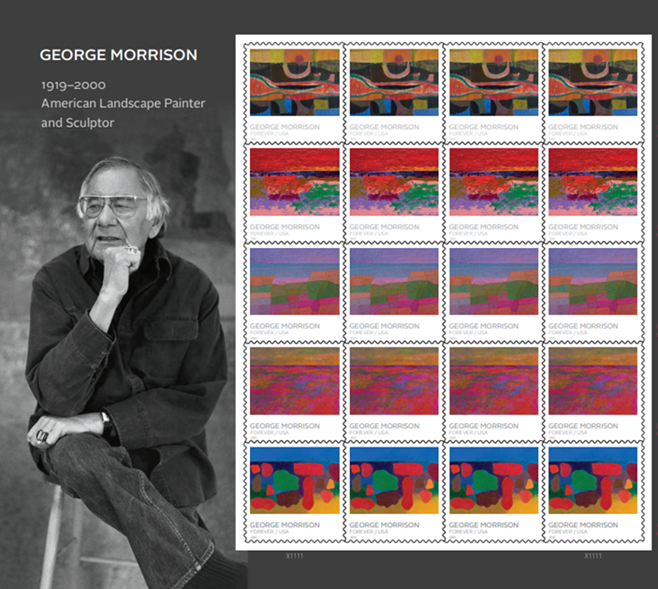
Courtesy of the United States Postal Service.
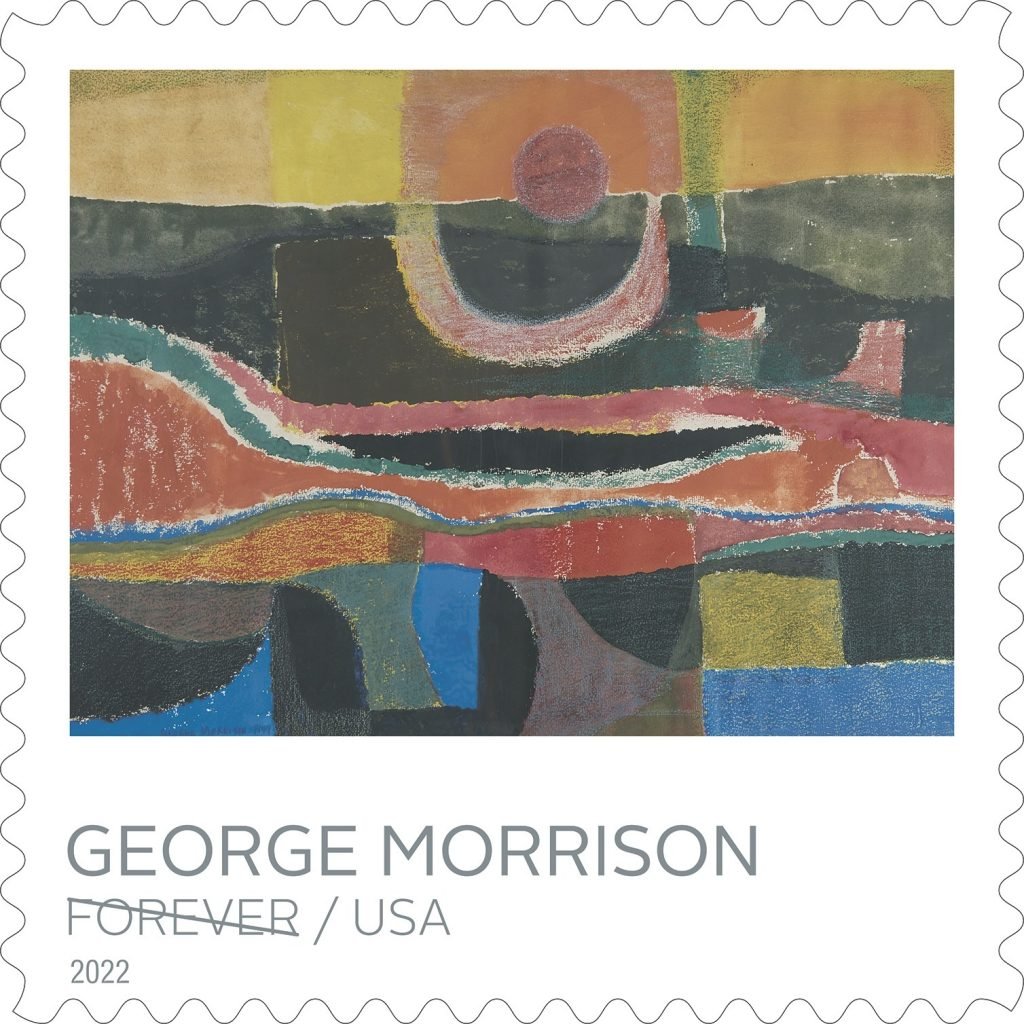
George Morrison’s Sun and River (1949). Courtesy of the United States Postal Service.

George Morrison’s Lake Superior Landscape (1981). Courtesy of the United States Postal Service.
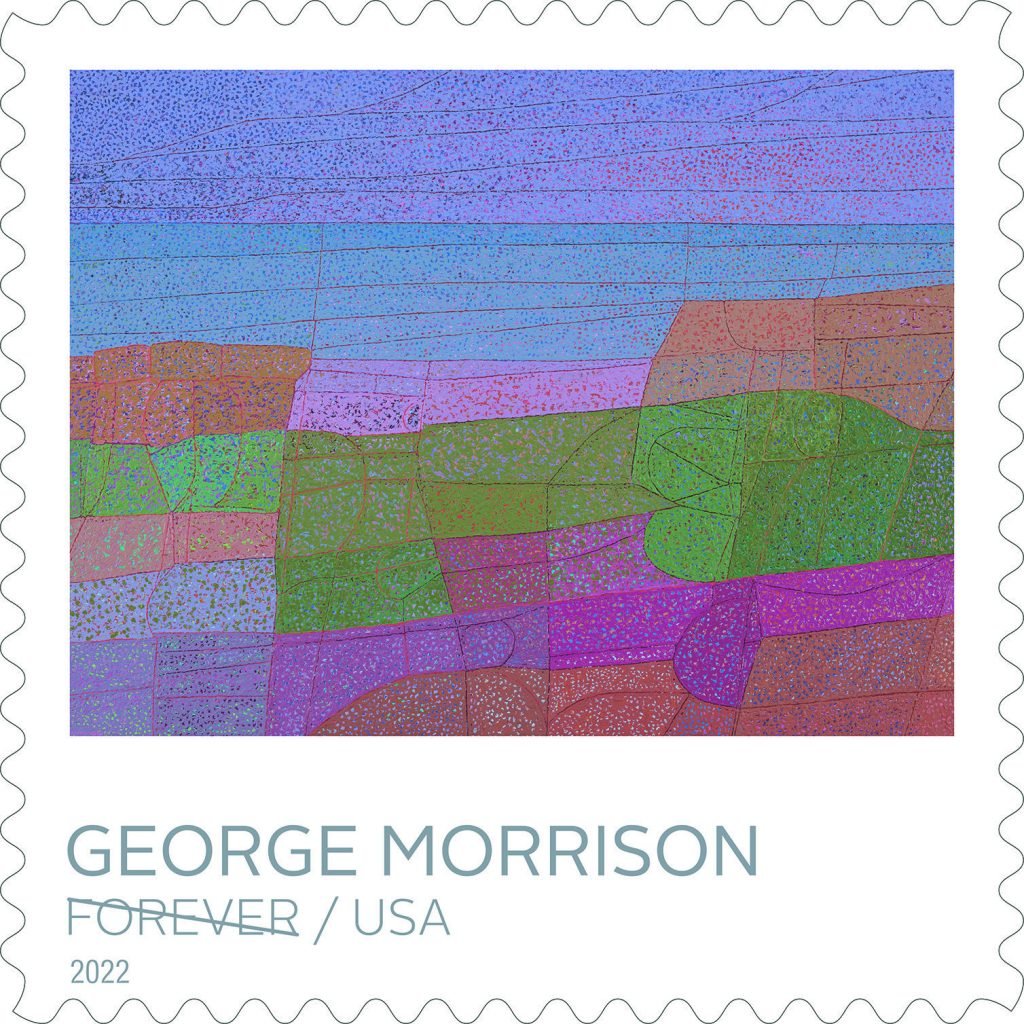
George Morrison’s Lake Superior Landscape (1981). Courtesy of the United States Postal Service.